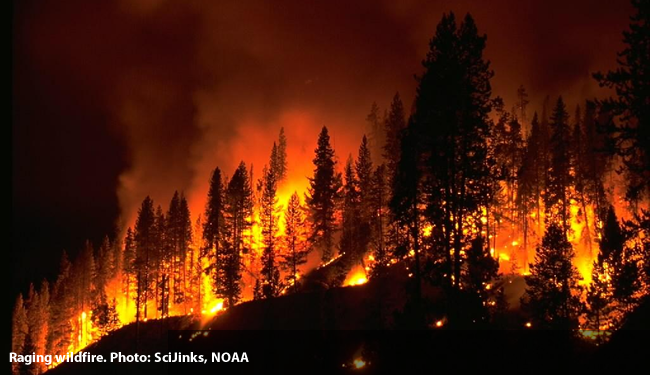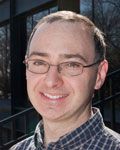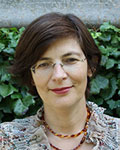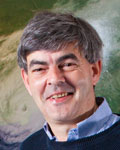Fire in the Earth System

Contacts, for more information:
Fire is a key process in the Earth system as it relates to a diverse set of impacts including vulnerability of lives and property, air quality, and as a driver of CO2 emissions.
GFDL Research
GFDL is engaged in several activities related to the representation and impacts of fire in the Earth system. On the research side, we have several successful examples of application of observed fire emissions on air quality (e.g. Lin et al., 2017, Xie et al., 2020) as well as process level ecosystem representation of lightning and human induced fire emissions and suppression on the carbon cycle. GFDL’s daily fire model including multi-day and crown fires (Rabin et al., 2018; Ward et al., 2018) was implemented in GFDL’s coupled carbon-chemistry-climate Earth system Model (GFDL-ESM4.1; Dunne et al., 2020) contributing public data to the Sixth phase of the Coupled Model Intercomparison Project (CMIP6; Eyring et al., 2016) with application to attribution of 2019 Alaska fire extremes (Yu et al., 2020). On the model development side, we are implementing fire injection heights as a function of satellite derived fire radiative power to compare modeled and observed carbonaceous aerosols.
These efforts play critical roles in fulfilling NOAA’s mandates to understand and project both future climate and the influence of climate and biogeochemical change on humans, and to provide stewardship of the atmosphere and oceans, particularly in the context of carbon cycle and air quality, and their climate interactions.
Climate-chemistry-fire interactions and feedbacks
GFDL has conducted fundamental research into the role of fire in the coupled chemistry climate including investigating the role of biomass burning on in modulating ozone (Naik et al., 2007), overall oxidation state (Mao et al., 2013) and on nitrogen emissions, gas-aerosol-chemistry interactions and the resulting atmospheric composition, and deposition (Paulot et al., 2017). These efforts improve understanding of the interactions and feedbacks by integrating fire emissions in a comprehensive atmospheric composition and climate context.
Application of fire emissions to assess air quality
GFDL’s focus has been in better understanding the coupling between fire, weather and climate patterns, and air quality, and has conducted several studies to assess the role of fire on past air quality extremes. These simulations with our atmospheric chemistry model forced by historical sea surface temperatures and nudged with reanalysis systems are a powerful complement to historical air quality observations through the ability to provide mechanistic attribution and improve understanding of drivers of past events. Our studies have demonstrated, for example, that variability in biomass burning and associated hot and dry meteorological conditions contribute significantly to interannual variability of surface ozone (Lin et al., 2017) and particulate matter pollution (Xie et al., 2020) over the western United States in summer, and the contrasting roles of long range transport, stratospheric intrusion, and wildfire on surface ozone ( Zhang et al., 2020; Langford et al., 2021).
Process Representation of Fire within the GFDL Earth system model
For over two decades, GFDL has worked collaboratively with researchers at Princeton University to develop GFDL’s capacity in Fire, starting from an annual fire model incorporated in GFDLs third generation models (Crevoisier et al., 2007; Magi et al, 2012) and continuing advances in representation of crop, pasture, and non-agricultural burning on daily timescales (Rabin et al., 2015) with further work incorporating relatively intense multi-day and crown fire (Ward et al., 2016; Ward et al., 2018) culminating in GFDL’s 4th generation ESM4.1 (Dunne et al., 2020) participating in the Sixth Coupled Model Intercomparison Project (CMIP6) with data available through the Earth System Grid Federation ESGF.
Emerging Research Areas
GFDL is developing capabilities for fire carbonaceous aerosol and other chemical injection into the troposphere based on Fire radiative power led by Paul Ginoux, reconsideration of volatile biological organic carbon emission by Fabien Paulot, and other applications to extremes.
Featured Results
Publications
- Yu, Yan, John P Dunne, Elena Shevliakova, Paul Ginoux, Sergey Malyshev, Jasmin G John, and John P Krasting, January 2021: Increased risk of the 2019 Alaskan July fires due to anthropogenic activity. Bulletin of the American Meteorological Society, 102(1), DOI:10.1175/BAMS-D-20-0154.1S1-S7.
- Langford, A. O., Senff, C. J., Alvarez II, R. J., Aikin, K. C., Baidar, S., Bonin, T. A., Brewer, W. A., Brioude, J., Brown, S. S., Burley, J. D., Caputi, D. J., Conley, S. A., Cullis, P. D., Decker, Z. C. J., Evan, S., Kirgis, G., Lin, M., Pagowski, M., Peischl, J., Petropavlovskikh, I., Pierce, R. B., Ryerson, T. B., Sandberg, S. P., Sterling, C. W., Weickmann, A. W., and Zhang, L.: The Fires, Asian, and Stratospheric Transport-Las Vegas Ozone Study (FAST-LVOS), Atmos. Chem. Phys. Discuss., https://doi.org/10.5194/acp-2021-690, 2021.
- Zhang, Li, Meiyun Lin, A Langford, and Larry W Horowitz, et al., September 2020: Characterizing sources of high surface ozone events in the southwestern U.S. with intensive field measurements and two global models. Atmospheric Chemistry and Physics, 20(17), DOI:10.5194/acp-20-10379-2020.
- Xie, Yuanyu, Meiyun Lin, and Larry W Horowitz, July 2020: Summer PM2.5 Pollution Extremes Caused by Wildfires Over the Western United States During 2017–2018. Geophysical Research Letters, 47(16), DOI:10.1029/2020GL089429.
- Dunne, J P, L W Horowitz, A Adcroft, et al., in press: The GFDL Earth System Model version 4.1 (GFDL-ESM 4.1): Overall coupled model description and simulation characteristics. Journal of Advances in Modeling Earth Systems. DOI:10.1029/2019MS002015.
- Rabin, S, Daniel S Ward, Sergey Malyshev, B I Magi, Elena Shevliakova, and Stephen W Pacala, March 2018: A fire model with distinct crop, pasture, and non-agricultural burning: Use of new data and a model-fitting algorithm for FINALv1. Geoscientific Model Development, 11(2), DOI:10.5194/gmd-11-815-2018.
- Ward, Daniel S., Elena Shevliakova, Sergey Malyshev, and S Rabin, January 2018: Trends and variability of global fire emissions due to historical anthropogenic activities. Global Biogeochemical Cycles, 32(1), DOI:10.1002/2017GB005787.
- Lin, Meiyun, Larry W Horowitz, R Payton, Arlene M Fiore, and G Tonnesen, March 2017: US surface ozone trends and extremes from 1980 to 2014: quantifying the roles of rising Asian emissions, domestic controls, wildfires, and climate. Atmospheric Chemistry and Physics, 17(4), DOI:10.5194/acp-17-2943-2017.
- Ward, Daniel S., Elena Shevliakova, Sergey Malyshev, M Kuwata, and Andrew T Wittenberg, December 2016: Variability of fire emissions on interannual to multi-decadal timescales in two Earth System models. Environmental Research Letters, 11(12), DOI:10.1088/1748-9326/11/12/125008.
- Paulot, Fabien, David J Paynter, Paul Ginoux, Vaishali Naik, S Whitburn, M Van Damme, L Clarisse, P-F Coheur, and Larry W Horowitz, August 2017: Gas-aerosol partitioning of ammonia in biomass burning plumes: implications for the interpretation of spaceborne observations of ammonia and the radiative forcing of ammonium nitrate. Geophysical Research Letters, 44(15), DOI:10.1002/2017GL074215
- Rabin, S, B I Magi, Elena Shevliakova, and Stephen W Pacala, November 2015: Quantifying regional, time-varying effects of cropland and pasture on vegetation fire. Biogeosciences, 12(22), DOI:10.5194/bg-12-6591-2015.
- Mao, Jingqiu, Larry W Horowitz, Vaishali Naik, Songmiao Fan, Junfeng Liu, and Arlene M Fiore, March 2013: Sensitivity of tropospheric oxidants to biomass burning emissions: implications for radiative forcing. Geophysical Research Letters, 40(6), DOI:10.1002/grl.50210.
- Magi, B I., S Rabin, Elena Shevliakova, and Stephen W Pacala, August 2012: Separating agricultural and non-agricultural fire seasonality at regional scales. Biogeosciences, 9(8), DOI:10.5194/bg-9-3003-2012.
- Lamarque, Jean-Francois, and Vaishali Naik, et al., August 2010: Historical (1850–2000) gridded anthropogenic and biomass burning emissions of reactive gases and aerosols: methodology and application. Atmospheric Chemistry and Physics, 10(15), DOI:10.5194/acp-10-7017-2010.
- Naik, Vaishali, D L Mauzerall, Larry W Horowitz, M Daniel Schwarzkopf, V Ramaswamy, and M Oppenheimer, 2007: On the sensitivity of radiative forcing from biomass burning aerosols and ozone to emission location. Geophysical Research Letters, 34, L03818, DOI:10.1029/2006GL028149.
- Crevoisier, Cyril, Elena Shevliakova, M Gloor, C Wirth, and Stephen W Pacala, 2007: Drivers of fire in the boreal forests: Data constrained design of a prognostic model of burned area for use in dynamic global vegetation models. Journal of Geophysical Research, 112, D24112, DOI:10.1029/2006JD008372.





